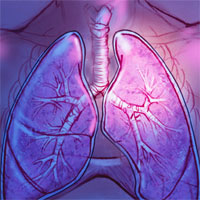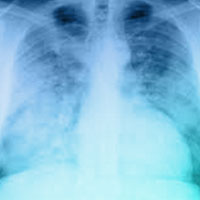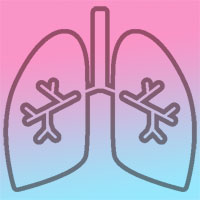Stories Category: Intensive Care

Delays in Emergency Care and Mortality during Major U.S. Marathons
Large marathons frequently involve widespread road closures and infrastructure disruptions, which may create delays in emergency care for nonparticipants with acute medical conditions who live in proximity to marathon routes. Medicare... read more

Which position is safest for central line placement: subclavian, jugular, femoral?
Where to place a central venous catheter is a decision driven mainly by individual experience and preference. The limited evidence available has not established any site as superior; the subclavian position has been reported... read more
Building Global Collaboration in Acute Care Research
Dr. Ludwig Lin, MD, speaks with John C. Marshall, MD, FRCSC, FACS, about his talk given at the 46th Critical Care Congress in Honolulu, Hawaii on, "Building Global Collaboration in Acute Care Research." Dr. Marshall discusses... read more

Lung Microbiome: Key to Respiratory Ills?
Recently, JAMA discussed this research and its potential clinical applications with 2 experts on the front lines, Jack Gilbert, PhD, a microbial ecologist at the University of Chicago and director of its new Microbiome Center... read more

Komodo dragon-inspired synthetic peptide DRGN-1 promotes wound-healing of a mixed-biofilm infected wound
Cationic antimicrobial peptides are multifunctional molecules that have a high potential as therapeutic agents. We have identified a histone H1-derived peptide from the Komodo dragon (Varanus komodoensis), called VK25. Using... read more

Comparison of Alveolar Recruitment Strategies for Preventing Postoperative Pulmonary Complications
This randomized clinical trial compares the effects of adding an intensive vs moderate alveolar recruitment strategy to protective ventilation on the number and severity of pulmonary complications following cardiac surgery.... read more

Top 5 Skills Every Nurse Should Develop Quickly
What are the top five skills that every nurse should develop? Nope! Not those. I imagine many of you reading automatically think about the clinical skills it takes to become a professional nurse. While clinical skills are... read more

Communicating Context in Quality Improvement Reports
The study by Demb and colleagues reports on the positive results of an intervention strategy to reduce excess radiation exposure across 5 academic medical centers associated with the University of California. Leading up to... read more

The impact of emergency department crowding on early interventions and mortality in patients with severe sepsis
Critically ill patients require significant time and care coordination in the emergency department (ED). We hypothesized that ED crowding would delay time to intravenous fluids and antibiotics, decrease utilization of protocolized... read more

Value-Based Reforms and the Hospital Readmission Reduction Program
In this longitudinal study of 2837 US hospitals between 2008 and 2015, we found that participation in 1 or more Medicare value-based reforms - including the Meaningful Use of Electronic Health Records program, the Accountable... read more

Pricey Technology Is Keeping People Alive Who Don’t Want to Live
As an ICU physician, I’ve used technologies like breathing machines and feeding tubes to save lives that would have been lost just a few decades earlier. But I’ve also seen the substantial costs, both human and financial,... read more

Family Responses to Prognostic Information in Chronic Critical Illness
Prognostic disclosure by skilled clinician communicators evokes a repertoire of responses from surrogates for the chronically critically ill. Recognition of these response patterns may help all clinicians better communicate... read more

Defining the Role of Specialists in Value-Based Health Care
Health care is at a crossroads and under pressure to add value by improving patient experience and health outcomes and reducing costs to the system. Efforts to improve the care model in primary care, such as the patient-centered... read more

The association of sleep quality, delirium, and sedation status with daily participation in physical therapy in the ICU
Poor sleep is common in the ICU setting and may represent a modifiable risk factor for patient participation in ICU-based physical therapy (PT) interventions. This study evaluates the association of perceived sleep quality,... read more

Association between delirium superimposed on dementia and mortality in hospitalized older adults
In a prospective cohort study, Thiago Junqueira Avelino-Silva and colleagues examine the association of delirium superimposed on dementia on hospital mortality and 12-month mortality in hospitalized older adults. This was... read more

Resistance Training for Glycemic Control, Muscular Strength, and Lean Body Mass in Old Type 2 Diabetic Patients
Type 2 diabetes (T2D) in elderly patients is associated with accelerated loss of skeletal muscle mass and strength. However, there are few meta-analysis reviews which investigate the effects of resistance training (RT) on... read more

Use of ‘tidal volume challenge’ to improve the reliability of pulse pressure variation
Fluid loading is usually the first step in the resuscitation of patients with acute circulatory failure. Fluid responsiveness is defined as the ability of the left ventricle to increase its stroke volume in response to fluid... read more








